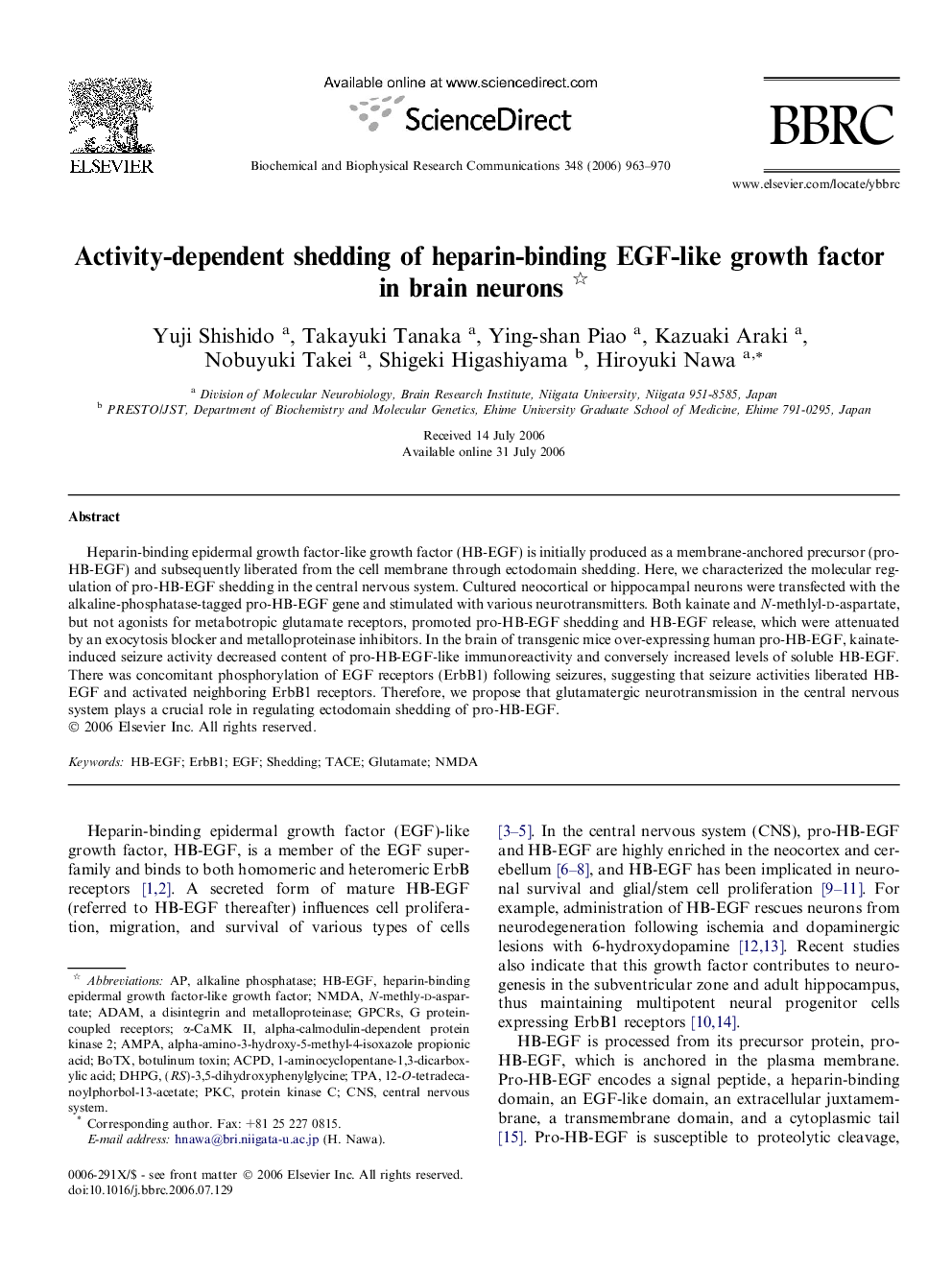| Article ID | Journal | Published Year | Pages | File Type |
|---|---|---|---|---|
| 1939240 | Biochemical and Biophysical Research Communications | 2006 | 8 Pages |
Heparin-binding epidermal growth factor-like growth factor (HB-EGF) is initially produced as a membrane-anchored precursor (pro-HB-EGF) and subsequently liberated from the cell membrane through ectodomain shedding. Here, we characterized the molecular regulation of pro-HB-EGF shedding in the central nervous system. Cultured neocortical or hippocampal neurons were transfected with the alkaline-phosphatase-tagged pro-HB-EGF gene and stimulated with various neurotransmitters. Both kainate and N-methlyl-d-aspartate, but not agonists for metabotropic glutamate receptors, promoted pro-HB-EGF shedding and HB-EGF release, which were attenuated by an exocytosis blocker and metalloproteinase inhibitors. In the brain of transgenic mice over-expressing human pro-HB-EGF, kainate-induced seizure activity decreased content of pro-HB-EGF-like immunoreactivity and conversely increased levels of soluble HB-EGF. There was concomitant phosphorylation of EGF receptors (ErbB1) following seizures, suggesting that seizure activities liberated HB-EGF and activated neighboring ErbB1 receptors. Therefore, we propose that glutamatergic neurotransmission in the central nervous system plays a crucial role in regulating ectodomain shedding of pro-HB-EGF.
